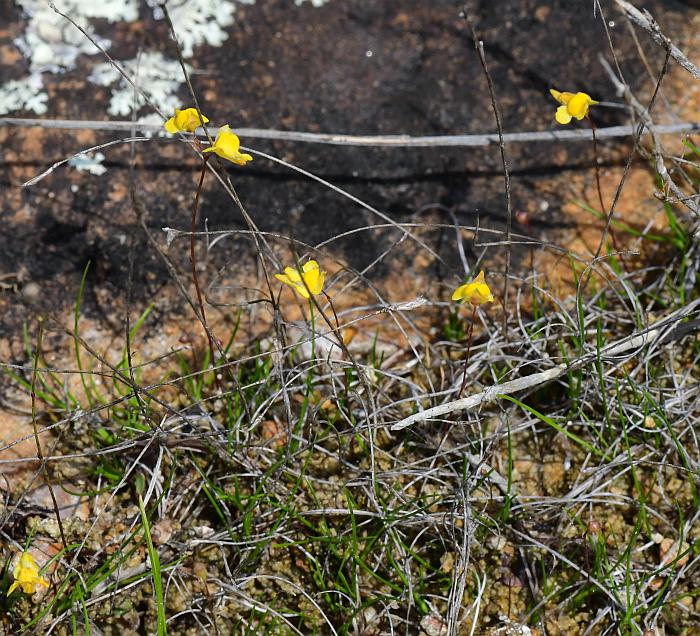Utricularia subulata L.
Slender Bladderwort, Zigzag Bladderwort

Native
CC = 10
CW = -5
MOC = 5
SRank = S1
© SRTurner
Utricularia subulata L.Slender Bladderwort, Zigzag Bladderwort | |
 |
Native CC = 10 CW = -5 MOC = 5 SRank = S1 |
© SRTurner |
|
Family - Lentibulariaceae Habit - Annual forb with slender stems, lacking true roots.
Stem - Slender, wiry, generally less than 10 cm long. Leaves - Absent or few, 3-12 mm long, short-petiolate, entire, linear, slender to relatively stout, not flattened (circular in cross-section), mostly bluntly pointed at the tips. Inflorescences - Racemes or single flowers, the stalk relatively slender, glabrous or sparsely appressed-hairy toward the base. Bracts 1-2 mm long, ovate to elliptic, peltate, more or less appressed to the axis, rounded to bluntly pointed at the ends.
Flowers - Calyx lobes 1.0-1.5 mm long, broadly ovate to nearly circular, broadly rounded at the tip. Corollas (including the spur) 8-14 mm long, yellow, the upper lip noticeably smaller than the lower one, broadly ovate, entire; the lower lip broadly ovate-triangular, 3-lobed, the palate densely hairy, the spur (which is often appressed to the lower lip and thus difficult to observe) 2.5-6.0 mm long, narrowly conic-tubular, relatively slender and bluntly to sharply pointed (rarely minutely notched).
Fruits - Capsules 1.0-1.5 mm long, globose. Seeds 0.2-0.3 mm long, obovate, not winged, brown, the body with a reticulate pattern of low ridges. Flowering - May - June, occasionally again in September. Habitat - Open marly areas of fens. Origin - Native to the U.S. Lookalikes - Other species of Utricularia. Other info. - This small species is probably rare in Missouri, though it may be more common than realized. It is quite small and inconspicuous, despite the yellow corollas, and members of the genus can be difficult to unambiguously identify to species. This particular species often lacks leaves, or the little leaf material present is submerged in substrate and difficult to isolate without damage. Corolla morphologies within this genus are important for identification. In this case, the lower corolla lip is three-lobed (creating a sort of "winged" appearance) and significantly longer than the upper lip. If present, the carnivorous bladders in this species are often submerged and difficult to observe. The habitat preference is quite specific to soils which are water-saturated but not deeply submerged, and this preference probably also contributes to the plant's rarity in Missouri. It is somewhat more common in southeastern states, particularly along the Gulf and Atlantic coasts. Photographs taken at Shut-in Mountain fen, Shannon County, MO, 5-19-2023 (SRTurner). |